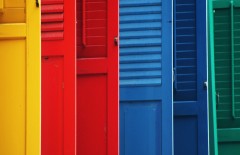
Colors are prime elements of color photographys. The photographs speak the language of colors. Just like a black and white photograph recites the timelessness, the various hues in the color photographs help in making the photographs interesting, lively, create mood and add drama to the scene. Getting great yet accurate colors is one thing which goes a long way in making your photographs impressive. While we all have used Photoshop for correcting the color cast, tuning the RGB channels, adjusting the levels and curves (for correcting the brightness and contrast of the scene), here are some tips to get great, unmatched, real and accurate colors in-camera. Try out these simple tips and you’ll realize that the colors which you get the purists’ way, have no match to any amount of image editing effort. All it takes to get great colors is — the right time and the right technique.
Right Time For Getting Great Colors
The secret behind great colors is lighting. In the words of Leonard Missone:
“Light glorifies everything. It transforms and ennobles the most commonplace and ordinary subjects. The object is nothing, light is everything”.
The various features and properties of lights help glorify the subject and make them stand distinctly colored. Owing to the impact of lights, the same rugged red wall when photographed at varying hours of the day produce different results. The one shot in day light will be brighter and the one shot at evening will have well-saturated vivid colors (which will take you by a surprise). When portraying colors as one of the primary attributes, you have to be ready with your photo-gear at the right time of the day / year.
- Shoot In Golden Hour: The golden hour or the magic hour as the photographers refer to it, is the best time of the day to photograph colors. The lights during the golden hour of the day possess some special characteristics (angular light, low intensity, diffused), which help in getting well-saturated vivid colors in the photographs. The camera perceives and sees the light as distinct from the human eyes (which are sensitive to change) and thus produce the colors which may look unreal yet pleasing.
- Shooting At Night / Twilight: Shooting at night gives a lot of opportunities to make the most from the available lights in form of street lights, florescent lamps, other artificial lights and the settling colors (from orange to blue to black) of the skies. Going out for photographing at the twilight enables you use the natural lights and the artificial lights to your advantage to produce unanticipated colors (owing to the color of the artificial lights which look different when photographed).
- Prefer Shooting In Autumn / Fall: The autumn or the fall is the season of colors. And shooting in that season or in a cloudy environment gives you soft-light in addition to great colors. It is the nature’s way of expressing life in the form of beautiful colors. It is the time of the year when everything in the vicinity looks fresh and lively. This is perhaps the best time of the year when you can observe nothing less than the brilliant and excellent colors. You can easily find the carpet of red leaves, overlapping leaves in varying shades of green, yellow and cloudy backdrop to your subject to speak the language of colors.
- Shoot When There Is A Sudden Change In The Climate: This one is quite strange and rare. I came across this valuable tip on some photography forum where people were discussing on how to shoot the sunsets. Later I discovered the same fact at kenrockwell.com, where he recites the secret behind getting great colors in one of his photographs shot after the volcanic eruption.
Reducing the levels of light gives you darker colors which gives the effect of saturated and vivid colors. Look for angular light to capture high contrast colors.
Right Technique For Getting Great Colors
While the half of the battle is won by being there at the right time, the next thing which contributes in getting the great colors is the right technique. Fine-tune the camera and set the following settings to get great colors in your captures.
- Bracket The Shots: Sometimes the colors tend to look dull and boring or even get washed off owing to the exposure set by the camera. Especially when shooting outdoors in natural lights, the camera tries to act smart and plays tricks. For example, when photographing the sunset, you have to meter the area directly above the sun and reduce the shutter speed by 1 to 2 f-stops to make it look like a sunset (otherwise the scene is overexposed and look as if photographed in the day-light). By turning on the bracketing, you can get 3 shots for the same scene at varying exposures and later pick the one which portrays saturated colors (usually the underexposed frame).
- Enhance Colors By Using Filters: Accessorizing the camera with various filters enable you to get great colors. The camera filters are special glasses which enables you to adjust the brightness of the scene to control the dynamic range of light. Some of the filters which help in enhancing the colors are:
- Polarizer Filter: Polarizers reduce the glares from the reflective surfaces and thus help in portraying the true colors. A polarizer filter tends to offset the exposure by 1EV and results in enhancing the color, saturation and contrast of the scene which includes water or other reflective surfaces.
- Graduated Neutral Density Filter: GND filters come in handy for adjusting the brightness levels of the light. It has a gradient of a dark shade at the top to total transparency at the bottom, which enables you to tone down the brightness of the sun or any other source of light and help compliment the scene with optimum colors.
- Intensifier Filters: Hoya provides the intensifier filters for enhancing individual colors (red, green and blue) in the scene. These filters enable you to enhance the warm colors and make them lively and peppy.
- Adjust In-Camera Saturation Level: While some cameras photograph the colors as needed, there are some cameras which provide the settings for fine-tuning the saturation levels to get the desired colors. Consciously decide over the saturation levels; as blowing out the RGB channels results in de-saturation and shifts the color. Shooting in RAW let’s you make a decision during post-processing.
- Set white-balance: You can correct the color cast of an image during post-processing by setting the required white-balance, but it is always better to set it in-camera for getting the “real” colors.
- Get a DSLR: DSLRs are professional cameras which serve a very basic yet the main purpose in photography — to get accurate tones and colors. It is this one thing they are tuned to do the best.
What is your approach for getting great colors? Do you like the purist approach or do you tweak colors in the post-processing stage?

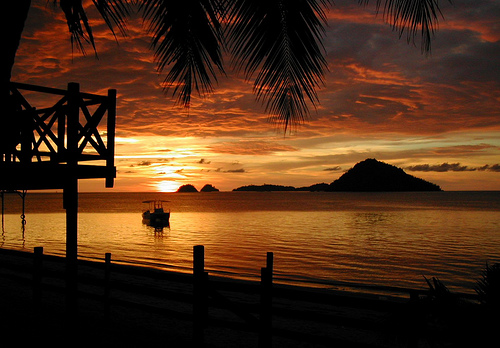
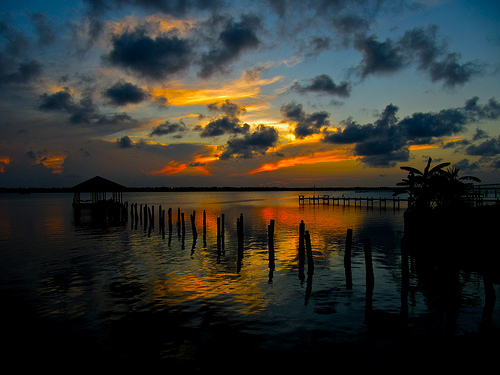
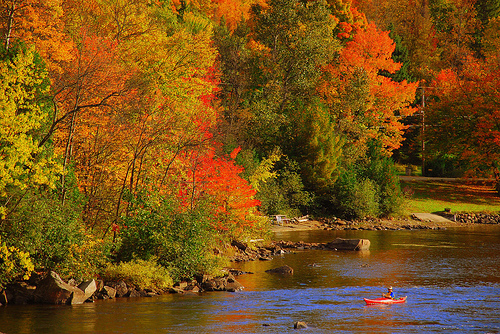
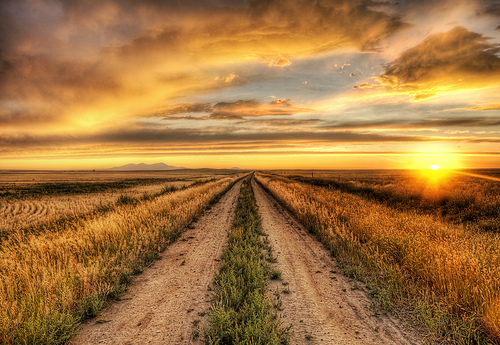

These are great examples of in colour correction and it would be great if people tried experimenting with custom white balance, profile settings and colour adjustments or enhancements.